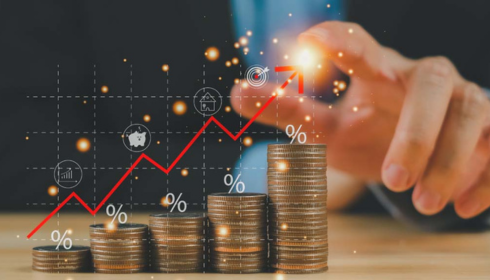
1. What is behavioral economics?
Behavioral economics is the study of how psychological, emotional, social, and cognitive factors influence financial decision-making, often leading individuals to make irrational choices that contradict traditional economic theories.
2. How might behavioral economics help me save money?
Behavioral economics helps in identifying those biases and habits that cause wrong financial decisions, such as overspending, procrastination, or impulsive purchases. The recognition of those patterns will lead to the strategy to counter those and increase savings.
3. What are the most common biases that impact saving behavior?
Present bias: Immediate rewards are more preferred than future benefits, making saving harder.
Anchoring: The tendency to overuse initial information (such as a purchase price) in making decisions.
Loss aversion: Suffering from losses more intensely than enjoying gains. This may be a reason why people are discouraged from saving.
Status quo bias: The tendency to stick with the default rather than change it, even when better alternatives exist.
4. What is present bias, and how does it affect my saving?
Present bias is the tendency to favor immediate gratification over future rewards, leading to overspending and failure to save for future needs. In order to fight present bias, you can automate savings or even set up “temptation bundling,” linking saving with an immediate, enjoyable activity.
5. How do I overcome present bias?
Automate savings: Set up automatic transfers from your checking account to your savings account.
Create mental “commitment devices”: For instance, promising to save money before you treat yourself to a small reward.
Set clear, specific goals: Having concrete goals (like saving for a vacation) can help reduce the pull of immediate desires.
6. What is the status quo bias, and how can it affect my finances?
The status quo bias is a tendency to keep with the current situation or defaults, even if better alternatives are available. This can prevent a person from seeking better savings options or improving his or her financial situation. The key to overcoming status quo bias is to be proactive in reviewing and adjusting financial strategies.
7. How can I break the status quo bias when saving?
Regularly review finances: Check for areas to save and ways of improving the budget and savings account.
Set tiny, achievable objectives: Large monetary tasks (saving for emergencies or retirement) need to be reduced into more practical steps.
Switch defaults: By default, automate contributions to the retirement or saving accounts.
8. What’s loss aversion, and how will it influence saving behavior?
Loss aversion is the psychological tendency to prefer avoiding losses over acquiring equivalent gains. This bias can make people more reluctant to spend or invest money, leading them to avoid useful financial decisions that carry risk. However, it can also lead to procrastination in saving, as individuals may fear they won’t have enough left after saving.
9. How can I use loss aversion to increase my savings?
Frame savings as avoiding future loss: Focus on the security and benefits you’ll lose by not saving (e.g., not having an emergency fund).
Set up automatic transfers: This can reduce the pain of actively saving by automating the process, so you don’t have to make the choice each time.
10. What is mental accounting, and how does it affect my saving habits?
Mental accounting is the tendency to classify and treat money differently depending on its source or intended use. This makes individuals spend more liberally from some “mental accounts” such as tax refunds or bonuses instead of saving them. Overcome mental accounting by treating all income as part of your overall financial picture and avoiding earmarking money for specific purposes unless absolutely necessary.
11. How can I avoid overspending using mental accounting?
Combine savings into one account: Instead of having multiple “pots” for savings, keep your money in one place to encourage a holistic view of your financial picture.
Treat bonuses and windfalls as savings: Instead of spending extra income like a bonus, treat it as a chance to build up your savings or invest for the future.
12. What is the “pain of paying,” and how can it help me save more?
The “pain of paying” is a term that refers to the pain or aversion that people experience when they give up money. According to behavioral economics, the more pain there is, the better the financial decision. Paying with cash or using budgeting apps makes the pain of paying more immediate and, therefore, more mindful spending.
13. How can the pain of paying me make me want to save?
Use cash. It hurts the pocketbook if you pay using cash, especially on impulse buying.
Track all purchases. By getting feedback immediately by tracking purchases in an app, it will curtail unnecessary spendings.
Know financial goals: Having a great idea of your larger goal keeps your money allocated for that one makes the pain of paying all worthwhile.
14. What is anchoring in behavioral economics?
Anchoring is a behavior where the person tends to use heavily the first information he/she has encountered while taking a decision as an “anchor”. For example, if an article is discounted from $100 to $50, you will probably think that the article is relatively cheaper compared to its actual value. It could be misleading while spending money and not saving at all.
15. How can I prevent the anchoring effect in financial decisions?
Don’t shop to compare: Refrain from comparing your personal finances to those of others. It will encourage unnecessary spending.
Set budgets ahead of time: Plan your budgets in advance, so you’re not influenced by initial price tags or sales.
16. What is the impact of social influence on saving?
The influence of social on how financial decisions are made bases the ability that people get from others through their behaviors, opinions, and attitudes. For example, if those people surrounding you spend recklessly, you may feel forced to spend too. Understanding these forces can then help curb unnecessary expenditure and keep one straight on saving.
17. How can social influence be used in saving?
Surround yourself with savers: Join communities or groups focused on saving money to encourage positive financial habits.
Set up public goals: Share your savings goals with friends or on social media to create a sense of accountability.
18. What is the “foot-in-the-door” technique, and how can it help me save?
The “foot-in-the-door” technique involves establishing small, insignificant commitments to momentum toward the overall goal. That is, set aside a particular percentage of earnings and gradually step up the quantum over time for saving money. This will start building the savings habit without overwhelming the individual.
19. How to apply the “foot-in-the-door” savings technique?
Apply the “foot-in-the-door” technique through saving small portions regularly and steadily increasing contributions in time.
Set up automatic transfers for a modest amount at first, then raise the amount as you get used to it.
20. What is commitment bias, and how can I use it to save money?
Commitment bias is the tendency to stick with past decisions and commitments, even when they no longer serve you. You can use this to your advantage by committing to regular savings and making it harder to back out, such as setting up automatic contributions or enrolling in employer-sponsored savings plans.
21. How can I use commitment bias to my advantage in sticking to my savings goals?
Automate savings : Have set-up automatic deductions so saving becomes the default behavior
Sign contracts: Make a commitment to save with a partner or financial advisor to add an element of social accountability
Set non-financial rewards: Reward yourself for staying the course on savings commitments
22. What is the “endowment effect,” and how can it affect my savings?
The endowment effect is the tendency to overvalue what we own simply because we own it. This bias can make it harder to let go of unnecessary expenses or to sell unwanted items for cash. It may also cause you to keep underperforming investments instead of selling them.
23. How can I overcome the endowment effect when saving money?
Review regularly: You should review your financial situation from time to time to know what can be sold, cut, or consolidated.
Focus on future benefits: Remember the long-term benefits of parting with unnecessary items or expenses.
24. How can I use the “nudge” theory to save more money?
“Nudging” is designing your environment or decision-making processes to encourage better choices without limiting options. To save more, you can “nudge” yourself by setting up automatic savings contributions, simplifying budgeting, or presenting savings goals in a way that makes them easier to achieve.
25. What are some examples of effective nudges to save money?
Automatic savings programs: Enroll in automatic deductions from your paycheck or bank account.
Default options: Automatically increment your retirement plan contributions each year.
Round-ups: Use apps or services rounding up purchases and depositing the difference into a savings account.
26. What’s temporal discounting, and how does it decrease the chance of my saving?
Temporal discounting is the tendency to devalue future rewards compared to immediate ones, which can lead to under-saving. People may choose to spend money now rather than save for future needs, even if saving offers greater long-term benefits.
27. How can I counteract temporal discounting and save more?
Visualize future benefits: Create a clear mental image of what saving today will enable in the future.
Reward yourself: Set short-term rewards for meeting long-term savings goals to reinforce good saving behavior.
Make savings automatic: Automating savings can help you commit to future financial goals.
28. What is the “sunk cost fallacy,” and how can it affect my finances?
The sunk cost fallacy is the one where you continue investing in something because of what you’ve already invested, even when it’s no longer a good choice. You tend to hold onto bad investments or spend money unnecessarily.
29. How do I prevent the sunk cost fallacy in my finances?
Focus on future outcomes: Make financial choices based on future benefits and not those already in the past.
Cut your losses: Do not hesitate to sell off any underperforming assets or quit wasting money on bad financial decisions.
30. How do emotions affect saving money?
Emotions may prompt impulsive spending or saving behavior, both good and bad. For instance, people may go on a splurge when happy or anxious and end up suffering financially. Conversely, fear or insecurity may prompt over-saving.
31. How to control emotional spending and save money
Wait to buy: You should take some time to cool off before you make any purchase to determine if it’s necessary.
Keep track of spending: Use budgeting apps to observe where emotions trigger spending.
Create goals and limits: Set clear savings goals and design budgets that are limited to prevent impulsive purchases.
32. What is scarcity thinking, and how does it impact my saving?
Scarcity thinking is the mindset that there is never enough money, which causes anxiety about finances. This can lead to hoarding money or, on the other hand, overspending in an attempt to alleviate stress.
33. How can I change from scarcity thinking to a growth mindset in saving money?
Focus on abundance: Recognize the resources you have and appreciate small savings progress.
Set achievable goals: Start small and gradually increase your savings to build confidence.
Track progress: Celebrate milestones to solidify a good financial mindset.
34. What is the “halo effect” and what does it mean for my finance decisions?
This is when the fact that a thing has, say, one positive attribute-like having a huge salary or succeeding in an investment-influences your judgment toward that thing because of its bright side. Most people make erroneous finance decisions out of this habit because they only see the glittery side rather than the rough one.
35. How can I avoid the halo effect when making saving decisions?
Focus on objective data: When you are evaluating investments or purchases, try to rely on facts and research rather than assumptions.
Consider all factors: Don’t let one positive feature cloud your judgment—evaluate all aspects of a financial decision.
36. How does the availability heuristic affect my savings decisions?
The availability heuristic is the tendency to rely on easily recalled information when making decisions. If you hear about someone else’s financial struggles, you may overestimate your own financial risks and overspend out of fear, or you may save excessively.
37. How can I use the availability heuristic to make better saving decisions?
Seek balanced information: Avoid focusing solely on anecdotal stories and consider broader data to make decisions.
Don’t make panicked decisions: Don’t make financial decisions through fear or hearsay but through great planning.
38. What is the planning fallacy, and how can it impair my ability to save?
A planning fallacy is an incorrect belief that planning will take less time than it actually will. Often, people who suffer from the planning fallacy are excessively optimistic in planning financially. They feel they would save more, or they would achieve the goals within less time.
39. How can I prevent the planning fallacy in my savings plans?
Add extra time: Provide a cushion of time or money for things that are likely to go wrong.
Be realistic: Make milestones achievable based on real experience rather than idealized expectation.
40. How can I use nudging to encourage my family to save more money?
Engage family members in setting financial goals: Make saving a family goal and set specific objectives.
Use visual cues: Display reminders about savings goals around the house to encourage action.
41. What are some small financial changes that can have a big impact over time?
Automate savings: Set up small automatic transfers that add up over time.
Round up purchases: Use apps that round up purchases and deposit the change into savings.
Eliminate small, unnecessary expenses: Cancel unused subscriptions and reduce impulse buys.
42. What is the default effect, and how can you apply it to save more?
The default effect is the propensity to choose from pre-selected alternatives rather than changing them. So, set a default to let automatic savings contribution or auto enrolment into a retirement plan create the habit of saving.
43. How to create long lasting financial habits
Start small: Start with something that you feel could be achievable or easily doable. So make small financial goals that you’ll hit time after time.
Set savings to automatically be transferred without much thought and action.
Maintain a log: Keep an eye on savings accounts and refer back to this at times as reminders.
.
44. What are ways in which I can build an encouraging environment about money that encourages savings?
Be vocal: Tell other friends and family members you wish to discuss about saving with you.
Save-investment clubs: Be involved with other saving and investing individuals or groups in communities.
45. How do rewards aid in saving?
Rewarding oneself on savings milestones may help instill positive money behaviors. That will keep you excited and make it enjoyable.
46. How do I use rewards to stay motivated on saving?
Little rewards: Treat yourself to little rewards anytime you hit the savings milestones; for example, going out on a night out once you have met your savings milestone.
Long-term benefits: Plan big rewards, for example, taking a vacation when major savings milestones are achieved.
47. Why does setting clear financial goals assist me in saving more?
It is easier to focus and remain consistent in what you want to achieve if you know exactly how much you would like to save and by when.
48. What are some mistakes that people typically make when it comes to saving money?
Procrastination: Saving only when it “feels like the right time.”
Underestimating expenses: Failing to budget for unexpected expenses or inflation.
Not automating savings: Not making saving an automatic behavior.
49. How can I stay on track with my savings goals during difficult times?
Be flexible: You may need to adjust your savings amount temporarily, but keep the habit alive.
Get support: Discuss your challenges with a trusted friend or financial advisor.
Focus on the long term: remind yourself that setbacks are only temporary and your goals are still attainable.
50. How do I develop confidence in my ability to save money?
Celebrate small wins: acknowledge every little step towards your financial goals.
Review your progress: regularly monitor your savings and compare them with your initial goals.
Be patient: saving is a long-term activity, and consistent progress yields success.
Understanding behavioral economics can empower you to take control of your financial future. By using these strategies to save money, you can overcome cognitive biases, build good habits, and make smarter financial decisions.


